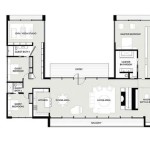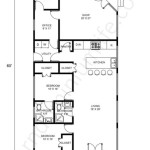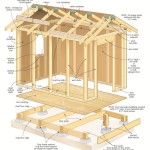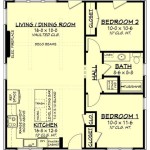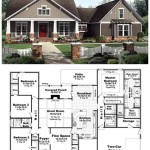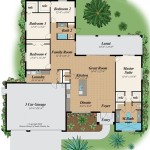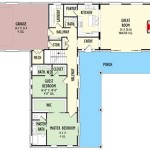Empty Nester House Plans: Streamlined Living on One Story
The transition to an empty nest is a significant life stage, often accompanied by a reevaluation of housing needs. With children grown and moved out, the large family home can feel spacious, underutilized, and require more maintenance than desired. This is where empty nester house plans, particularly those for one-story homes, become an appealing option. These plans prioritize comfort, accessibility, and ease of living, allowing homeowners to enjoy their newfound freedom without the unnecessary burdens of a multi-story dwelling.
Empty nester house plans are specifically designed to cater to the needs and preferences of individuals or couples whose children have left home. These plans focus on optimizing space usage, incorporating universal design principles for aging in place, and offering attractive features that enhance the overall quality of life. A one-story design eliminates the need for stairs, making it ideal for individuals with mobility concerns or those planning for the future. This article will explore the benefits, key considerations, and popular features of one-story empty nester house plans, providing insight into creating a comfortable and fulfilling living environment for this specific life stage.
Benefits of One-Story Empty Nester House Plans
Choosing a one-story house plan offers numerous advantages for empty nesters looking to downsize or right-size their living space. These benefits extend beyond mere convenience, encompassing factors related to safety, maintenance, and overall lifestyle.
Accessibility is a primary benefit. Eliminating stairs removes a significant barrier to mobility, ensuring that the home remains accessible regardless of age or physical limitations. This is crucial for aging in place and allows individuals to maintain their independence and comfort within their own home for longer.
Maintenance is also simplified in a one-story design. With all living areas on a single level, cleaning, repairs, and upkeep are more manageable. Exterior maintenance, such as roof repairs or gutter cleaning, is generally easier and safer to perform on a single-story structure compared to a multi-level home. This reduced maintenance burden allows empty nesters to spend more time pursuing hobbies, traveling, or simply relaxing and enjoying their free time.
Energy efficiency can also see improvements. One-story homes often have better insulation and less air leakage compared to their two-story counterparts. This can translate to lower energy bills and a more comfortable living environment year-round. The compact design also makes it easier to heat and cool the entire home, reducing energy consumption and promoting sustainability.
Finally, one-story designs often foster a greater sense of connection within the home. With all living spaces on the same level, family members and guests can easily interact and move between rooms. This can create a more welcoming and sociable atmosphere, which is particularly important for empty nesters who may desire increased social interaction and connection.
Key Considerations When Selecting a One-Story Empty Nester House Plan
Choosing the right house plan is a critical decision that should be carefully considered. Several factors need to be taken into account to ensure the final design meets the specific needs and preferences of the homeowner.
Size and layout are paramount. While downsizing is a common goal, it's essential to strike a balance between a smaller footprint and adequate living space. Consider the number of bedrooms and bathrooms needed for occasional guests or family visits. Open-concept layouts are popular for empty nester homes, as they create a sense of spaciousness and facilitate easy movement between living areas. However, it's also important to ensure that the layout includes defined spaces for different activities, such as a home office, a reading nook, or a hobby room.
Universal design features are crucial for aging in place. These features enhance accessibility and safety throughout the home. Examples include wider doorways and hallways to accommodate wheelchairs or walkers, grab bars in bathrooms, lever-style door handles, and roll-in showers. Incorporating these features from the outset can prevent the need for costly renovations later on and ensure that the home remains comfortable and functional as the homeowner ages.
Outdoor living spaces are a valuable addition to empty nester homes. A patio, deck, or screened porch can provide a relaxing and inviting space for outdoor entertaining, gardening, or simply enjoying the fresh air. Consider the orientation of the home and the prevailing climate when designing outdoor spaces to maximize their usability and comfort. Landscaping can also play a significant role in enhancing the overall appeal and functionality of the outdoor living area.
Storage space is often overlooked but is essential for maintaining an organized and clutter-free home. Ample closet space, built-in shelving, and a well-designed pantry can help keep belongings neatly stored and easily accessible. Consider incorporating storage solutions that are specifically tailored to the homeowner's lifestyle and hobbies, such as a workshop for crafting or a designated space for storing sports equipment.
Finally, consider the location carefully. Think about proximity to amenities such as grocery stores, medical facilities, and recreational opportunities. A walkable neighborhood can encourage an active lifestyle and facilitate social interaction. Also, consider the overall character of the neighborhood and whether it aligns with the homeowner's preferences and lifestyle.
Popular Features in One-Story Empty Nester House Plans
Several features are particularly popular in one-story empty nester house plans, reflecting the desire for comfort, convenience, and a relaxed lifestyle.
Open-concept living areas remain a consistent favorite. Combining the kitchen, dining room, and living room into a single, flowing space creates a sense of spaciousness and promotes social interaction. This design is ideal for entertaining guests and allows for easy movement between different areas of the home. The open layout also allows for natural light to permeate the entire space, creating a bright and inviting atmosphere.
Gourmet kitchens are frequently included in empty nester house plans. These kitchens often feature high-end appliances, ample counter space, and custom cabinetry. A large island with seating provides a central gathering place and facilitates meal preparation and casual dining. Attention to detail, such as task lighting and ergonomic design, ensures that the kitchen is both functional and aesthetically pleasing.
Luxurious master suites are another common feature. These suites typically include a spacious bedroom, a walk-in closet, and a spa-like bathroom. The bathroom may feature a soaking tub, a walk-in shower with multiple showerheads, and dual vanities. The master suite is designed to be a private oasis, providing a relaxing and comfortable retreat for the homeowner.
Flex spaces are versatile rooms that can be adapted to suit the homeowner's changing needs. These spaces can be used as a home office, a hobby room, a guest room, or a media room. The flexibility of these spaces allows the home to evolve with the homeowner's lifestyle and ensures that the space remains functional and relevant over time.
Attached garages are highly desirable, particularly in climates with inclement weather. An attached garage provides convenient access to the home and protects vehicles from the elements. Some house plans also include a workshop area within the garage, providing a dedicated space for DIY projects and hobbies. The convenience and security of an attached garage are particularly appealing to empty nesters who prioritize ease of living.
Finally, low-maintenance landscaping is often incorporated into the overall design. This type of landscaping typically includes drought-tolerant plants, minimal lawn area, and automated irrigation systems. The goal is to create an attractive and inviting outdoor space that requires minimal upkeep, allowing the homeowner to spend more time enjoying their garden and less time maintaining it.

X 17 Mod House Plan Modern 3 Suite Best Ing Home Design Mm 2673

An Empty Nester S Dream Home 69005am Architectural Designs House Plans
:max_bytes(150000):strip_icc()/SL-2049-F1-3204a31b3ccb426bade3f2380a29b2bd.jpg?strip=all)
Why Bellewood Cottage Is The Perfect House Plan For Empty Nesters

Empty Nester House Plans The Plan

Craftsman Style House Plan 3 Beds Baths 3554 Sq Ft 1057 1

Empty Nester House Plans The Plan

Empty Nester House Plans Retirement The Designers

Baby Boomer House Plans And Popular Empty Nester Floor

Baby Boomer House Plans And Popular Empty Nester Floor

Empty Nester House Plans Retirement The Designers

